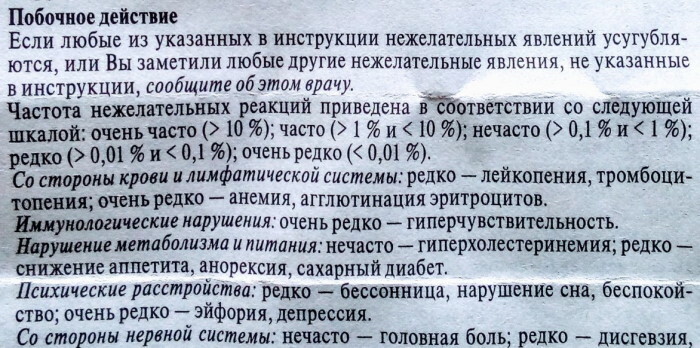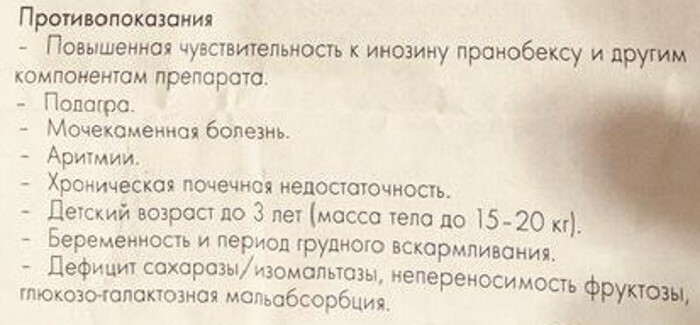The person is also susceptible to infection with tularemia, it can happen during the bite of a mosquito or other midges, by inhalation of dust during the threshing of grain, or eating infected food and water. Microbe enters the body through the skin, mucous membrane of the stomach or the respiratory tract, the bloodstream falls to local lymph nodes, causing them inflammation - the primary buboes, and then the infection spreads throughout the body, leading to intoxication, formation of secondary buboes and internal shock authorities.

What it is?
Tularemia - zooantroponoznaya infection with natural foci. It characterized by intoxication, fever, lymph node involvement. The causative agent of the disease - small bacterium Francisella tularensis. When heated to 60 ° C die after 5-10 minutes by boiling - immediately. Carriers sticks tularemia - hares, rabbits, water rats, voles.
In natural foci arise periodically epizootic. Infection is transmitted to humans or directly in contact with animals (hunting) or through infected food and water, at least aspiration through (in the processing of grain and forage products threshing grain) arthropods (horsefly, tick, mosquito and et al.).
Spread
Natural foci of tularemia are common in all the continents of the Northern Hemisphere in Europe, Asia and North America. Diseases of the people registered in the form of sporadic cases and outbreaks in Austria, France, Germany, Sweden, Japan, the United States and other countries. Often, the flash cover several hundred people. increased incidence observed in the years of increasing numbers of rodents.
In the Russian Federation, tularemia is found on the territory of almost all the territories, regions and republics. Significant outbreaks occurred in the south-eastern regions of the European part of the USSR during the Second World War, they were associated with a huge number of breeding mice.
In 90-ies of XX century in Russia diagnosed annually from 100 to 400 human cases, while 75% were in North, Central and West Siberian regions of Russia. Registered several outbreaks, including in Rostov, Smolensk and Orenburg regions, Bashkortostan and Moscow (1995). In 2000-2003. morbidity in the Russian Federation has decreased significantly and amounted to 50-65 cases per year, but in 2004 the number of cases rose again to 123, and in 2005 he fell ill with tularemia several hundred people. In 2010, it registered 115 cases of tularemia (in 2009 - 57). In 2013, in Khanty-Mansiysk tularemia infected more than 500 people (as of 1 September) 840 people on September 10, 2013.
Causes tularemia infection
Source - about 150 species of vertebrates (105 mammals, birds 25, some aquatic life), but the place of honor take rodents detachment (vole, water rats, house mice, rabbits), a thief on the spot - livestock (sheep, pigs and a large cattle).
Transporter - blood-sucking insects (ticks and gamasid ticks, mosquitoes, horseflies). transmission mechanisms: the contact (through direct contact with infected animals or their biological materials), contact-consumer (if waste infection sick animals household items), alimentary (when consuming contaminated food), transmissive (by the bite of infected blood-sucking), aerogenic (by inhalation of infected dust).
In the human body flows through the exciter microtraumas integuments, mucous undamaged tonsils / oropharyngeal / GI / airways / eye and possibly sexual organs. Moreover, the need for the infection of all the minimum infectious dose and, at a given dose of this disease It is a microbial cell (at the time, as in other infectious diseases - 10'⁵ and more)!

What happens when the penetration of the pathogen into the body?
Immediately after the penetration into the human body, the causative agent of tularemia begins to proliferate and, sooner or later, the bacteria are carried to all organs and systems. They are deposited mainly in lymph nodes, liver, spleen and lungs. If you begin to develop tularemia, symptoms usually appear within 3-6 days.
Patients sudden fever, aching muscles, nausea, headache. Note that the temperature often reaches critical levels, so the diagnosis of tularemia treatment should begin as soon as the correct diagnosis.
Classification
On the basis of the local pathological changes tularemia is divided into the following forms:
- Bubonic - shown enlarged lymph nodes, they maloboleznennye, the skin over them is not changed;
- Eye-bubonic - noted sharp eyelid edema, conjunctival redness and persons hemorrhages in the sclera;
- Abdominal - characterized by severe pain with an increase in mesenteric nodes;
- Anginal-bubonic - is accompanied by signs of inflammation of tonsils with necrotizing ulcerative lesions, the increase in the cervical and submandibular lymph nodes;
- Generalized form occurs with symptoms of severe intoxication is particularly severe and prolonged, often ends with a fatal outcome;
- The pulmonary form reveals inflammation in the bronchi and alveoli, manifesting clinic pneumonia with scarce complaints, X-ray examination indicated hilar and mediastinal nodes.
There are several classifications of the disease.
- According to the current duration of tularemia is acute, protracted (some sources you can find chronic), recurrent.
- According to the severity of the disease distinguish an easy, moderate and heavy.
More indicative, in terms of clinical manifestations, bubonic form.
Symptoms of tularemia in humans
Symptoms tularemia (see. pictures) are very diverse and are represented as common symptoms of intoxication, and specific symptoms. Common symptoms characterize the onset of the disease, regardless of its form.
The following are common symptoms of tularemia in humans:
- heat;
- chills;
- sudden headache;
- muscle pain;
- sclera vessels injection;
- rash.
Onset of the disease is characterized by a sharp rise in temperature to 39 degrees Celsius. Temperature accompanied by chills and lasts from two to three weeks. There is a sharp headache, nausea, and sometimes vomiting. Conjunctiva of the eye becomes red rapidly, and a rash appears on the body. All of these symptoms are associated with the phenomenon of intoxication and due to the action of endotoxin. The endotoxin released from dead bacteria has pyrogenic (raises temperature) and cutaneous necrotizing effect. Also during this period added to an allergic component of the immune response, and therefore the polymorphic rash appears on the body. The main symptom of the specific period is a regional lymphadenitis (increase of regional lymph nodes).
All of these symptoms are common to most microbial infections, including for zoonoses.
Further clinical symptoms of the disease is largely determined by the entrance gate and the localization of the pathological process. Conventionally isolated local forms tularemia with skin lesions, and mucosal lymph nodes and forms a primary lesion of internal organs.
bubonic form
The main symptom of this form is the presence of a bubo - enlarged lymph node. They develop due to intensive breeding in the lymph nodes of tularemia bacteria.
Buboes may be single or multiple. As a rule, it is axillary, inguinal or femoral lymph nodes. They appear for 3 - 5 days of illness, and their initial size is 2 - 3 cm. The difference of enlarged lymph nodes in tularemia is their tenderness. As the progression of pathology buboes increases to 8 - 10 centimeters. They clearly show through under the skin. Despite its size with subcutaneous fatty tissue buboes connected loosely, which gives them a little mobility. The skin over them for a long time retains its color.
Evolution buboes may be varied. Half of the patients buboes yourself regressing within 2 - 4 months. In the other half, they can fester. In this case, the contents of the bubo is softened, the skin becomes edematous over them. Buboes themselves are sharply painful, dense and hot. Pain decreased when pus breaks out. Purulent contents has a thick consistency, white color, odor without pronounced. It consists of dead cells, inflammatory cells and directly from tularemia bacteria themselves.
Diagnostics
Supporting clinical diagnosis of symptoms of tularemia have a fever, changes depending on the input Infection gate of the skin, eyes, tonsils, lungs and the development of a model regional lymphadenitis (Bubo). It becomes crucial data epidemiological history.
Patients must be met blood cultures and diagnostically important clinical material (E.g., sputum, secretions injuries) and antibodies titers in acute and rekonvalesentny periods retrieved at intervals of 2 weeks. Diagnostic considered a 4-fold increase or more appearance titer 1/128. The serum of patients with brucellosis may cross-react with antigens to Francisella tularen-sis, but credits it usually much lower. Fluorescent antibody staining is used in some laboratories. Often it found leukocytosis, but the number of white blood cells may be normal, with an increase in only a proportion of polymorphonuclear neutrophils.
Since the active MO is highly infectious, and culture medium samples suspected tularemia have examined with extreme caution and if possible, data from a study carried out in the best laboratories in the class or with.
tularemia treatment
In view of the fact that tularemia is classified as highly dangerous diseases, its treatment of a person held in conditions of infectious hospital. For the destruction of the pathogen in the body, appointed by the broad-spectrum antibiotics (gentomitsin, kanamycin, doxycycline). In case of failure of the assigned treatment appointed second series antibiotics (rifampicin, chloramphenicol, third generation cephalosporins).
In severe intoxication conducted infusion detoxification therapy. Appointed by antipyretics, antihistamines, anti-inflammatory drugs, vitamins. Open sores on the skin are closed dressings. Buboes subjected suppuration, surgically opened, followed by drainage.
prevention
Prevention of infection is as follows:
- Acquisition repellents - means to protect against ticks and horseflies bites.
- The hiking is necessary to take drinking water and in any case not to use unknown sources, because they may be contaminated.
- The risk of infection increases with tularemia in areas where widespread population of wild animals and hunting for them - the main type of activity. In such places, the need for vaccination against this disease.
- Careful examination of the body after each visit forests for ticks detection. If any should immediately seek medical advice and not try to remove the tick yourself.
- The use of protective clothing when fishing trips, hunting. They will protect against tick bites, rodents and small insects. Clothing should be worn so that to limit access to the body: long sleeves, sweater under his throat, his pants tucked into boots.
If it is possible to determine the area where the infection occurred people, prevention is carried out as follows:
- Restrict visiting infected ponds or forests;
- People living in this area, it is recommended to use only boiled water;
- Depending on the indication to perform specific prevention.
Specific prophylaxis of tularemia vaccine is conducted. Who should be vaccinated against infection?
- Workers fishery and livestock farms, farms in the infected area.
- All the people who go on holiday in countries or areas with disadvantaged situation of tularemia disease.
- Be sure to instill in people working with cultures of the causative agent of tularemia cells.
- People who arrived in the dangerous areas of tularemia, conducting agricultural, irrigation and drainage, construction works.
- Vaccinated routinely all the people living on the dangerous disease areas.
- Vaccination is carried out to all persons carrying out maintenance work in the contaminated area.
How and to whom do vaccinated against tularemia? Use inactivated live vaccine that is administered cutaneously or intradermally once at a dose of 0.1 ml. Vaccination is permitted from the age of seven years, all without a history. On the fifth and 15th days of checking the effectiveness of vaccination. If the result was negative - vaccinated again. It is believed that the vaccine protects a person from infection for 5 years, the maximum level of protective antibodies in the human body is stored for 10 years.



